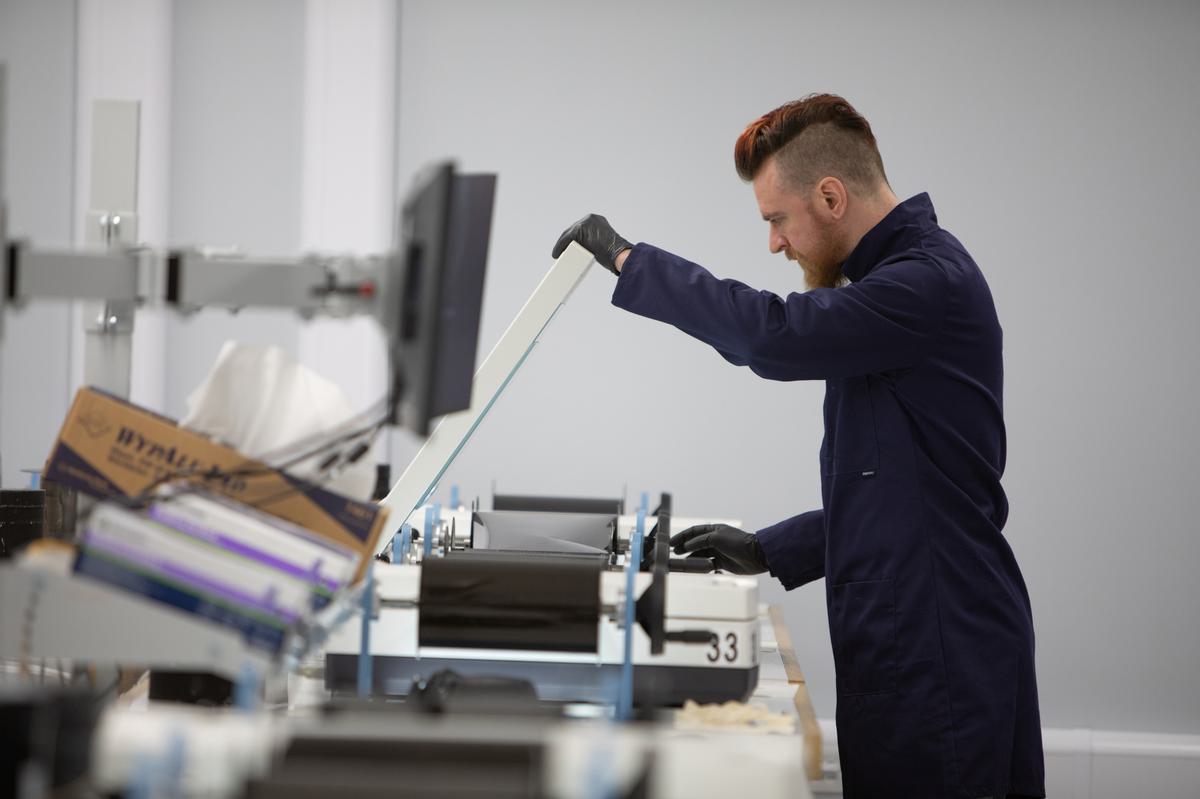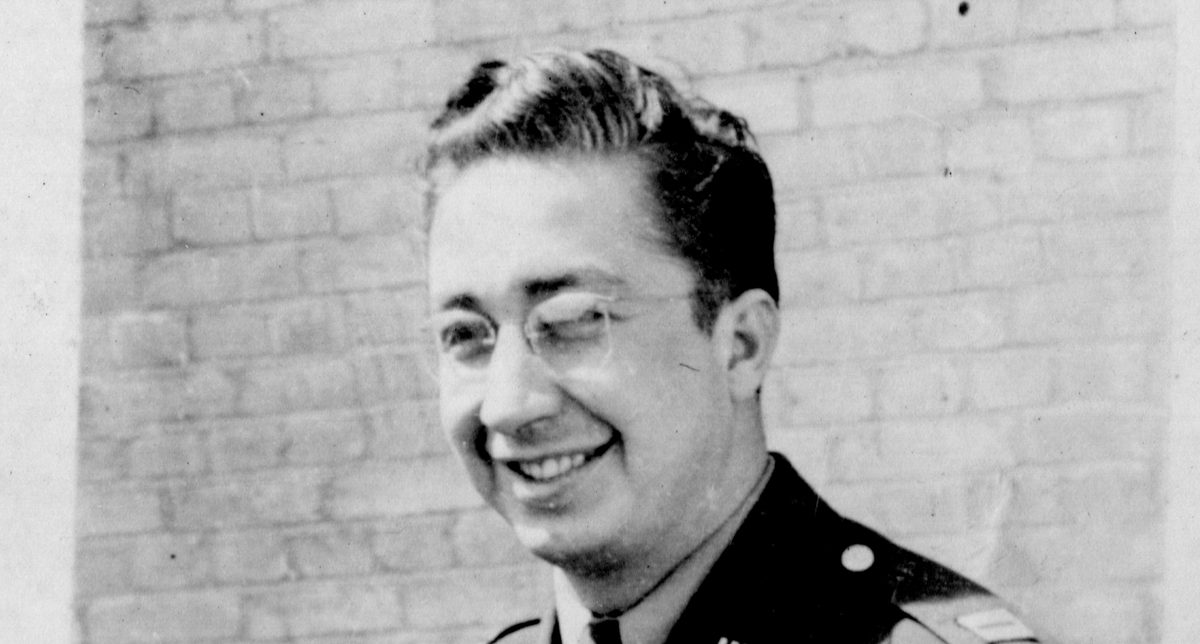Recruitment to the Allied Central Interpretation Unit

At the heart of the National Collection of Aerial Photography (NCAP) is the Allied Central Interpretation Unit (ACIU) collection. The collection contains millions of aerial reconnaissance images taken by Allied forces during the Second World War for the purposes of military intelligence and assessed by Photographic Interpreters of the ACIU at RAF Medmenham.
Photographic Interpreters at RAF Medmenham
Becoming a Photographic Interpreter (PI) in the ACIU required a unique set of skills. Although the ACIU was a military unit, there was no guarantee that a good sailor, soldier or airman would make a good PI, so recruitment often took place from civilian sources. PIs at RAF Medmenham (and predecessor bodies) came from a wide range of sources and backgrounds, a contributing factor in the comparatively large numbers of women who worked and held positions of authority in the unit.

A general view showing PIs of 'Z' Section (responsible for second phase reports on shipping) at RAF Medmenham. Image courtesy the Medmenham Collection
Correspondence held at the Medmenham Collection sheds a fascinating light on the recruitment of these PIs, especially from university sources. Recruitment from universities was driven by Wing Commander Hugh Hamshaw Thomas, himself a prominent palaeobotanist at the University of Cambridge.
Although Hamshaw Thomas had a clear idea of the sort of person required for PI work, he struggled to convince his superiors that recruits required qualifications or training in related matters. In one letter, he despairingly notes that ‘we have had men sent to us who had to be taught the meaning of the words latitude and longitude’.
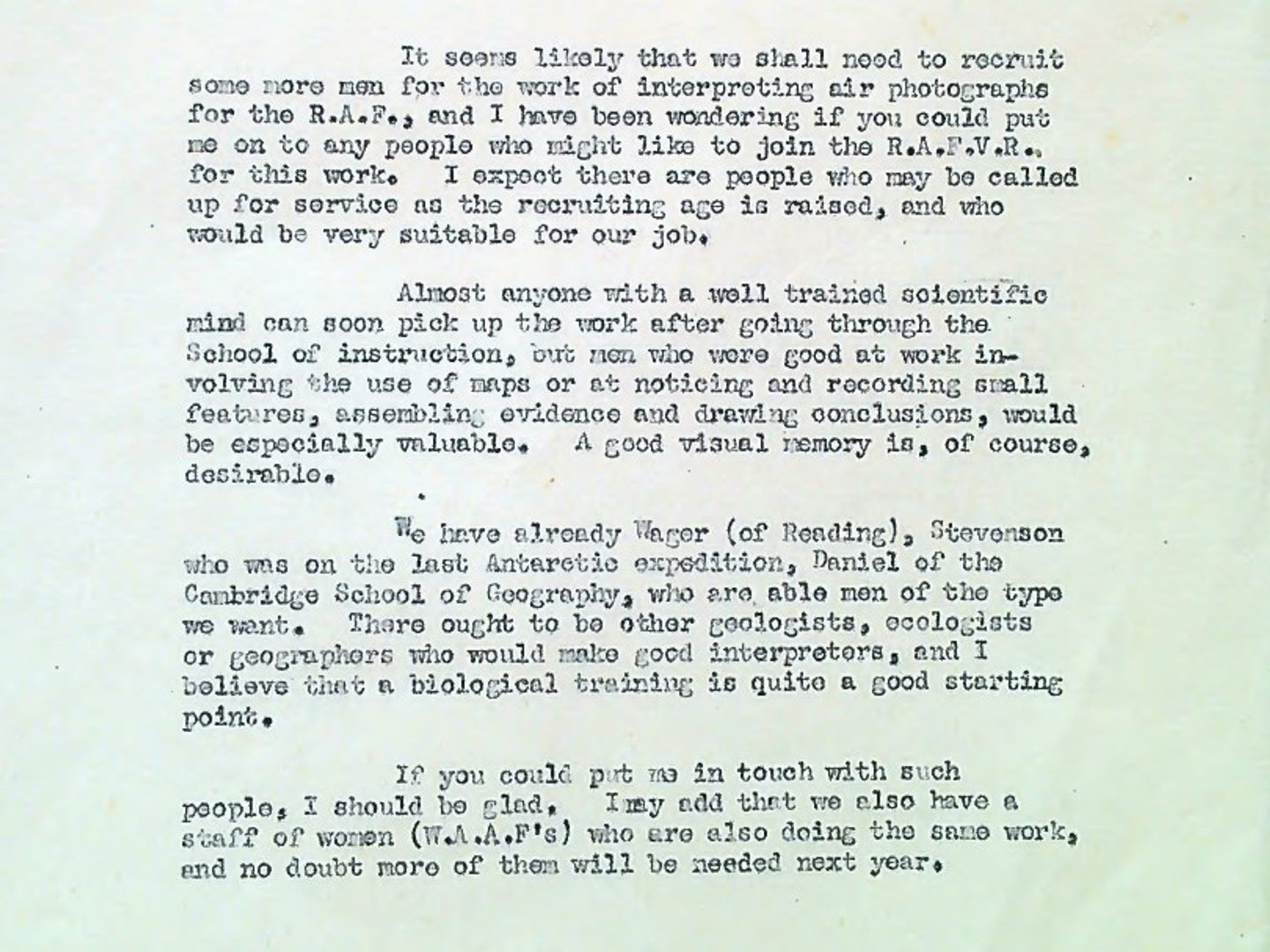
Text from a letter sent out by Hugh Hamshaw Thomas in late November or early December 1940, requesting recommendations from universities for potential recruits. Image courtesy the Medmenham Collection
‘Geologists, Ecologists or Geographers’
In late 1940, Hamshaw Thomas approached numerous university departments seeking recommendations of ‘geologists, ecologists or geographers’ among staff and students to work on photographic interpretation. He believed that ‘almost anyone with a well trained scientific mind’ could pick up interpretative skills after a period of instruction.
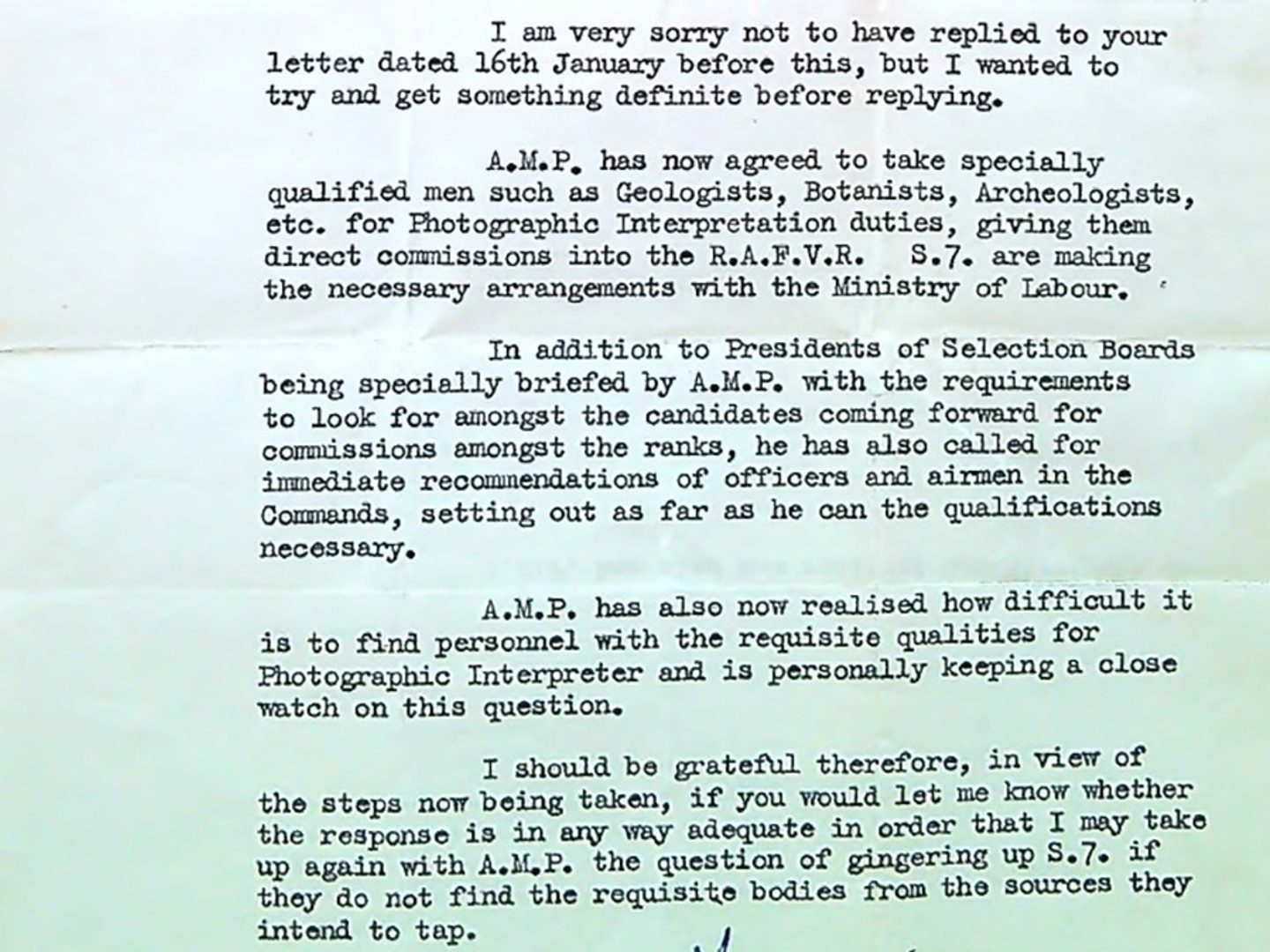
Text from a letter concerning PI recruitment received by Hugh Hamshaw Thomas in February 1943 from the office of the Vice-Chief of the Air Staff. Image courtesy the Medmenham Collection
However, his optimism may have been misplaced. A letter received by Hamshaw Thomas dated 12 February 1943 notes how difficult it was to find recruits with the right skills for photographic interpretation, but retained a focus on finding ‘Geologists, Botanists, Archaeologists’.
The responses are full of recommendations of promising biologists and cartographers, often noting a particular interest in photography. One suggestion of a potential PI is qualified with the note that as a Quaker, he would object to wearing uniform if required. Letters of application highlight the writers’ academic qualifications and desire to contribute to the war effort. References to candidates requiring release from ‘reserved occupations’ provide a window into the world of wartime Britain from which these men and women were drawn.
The Personal Touch
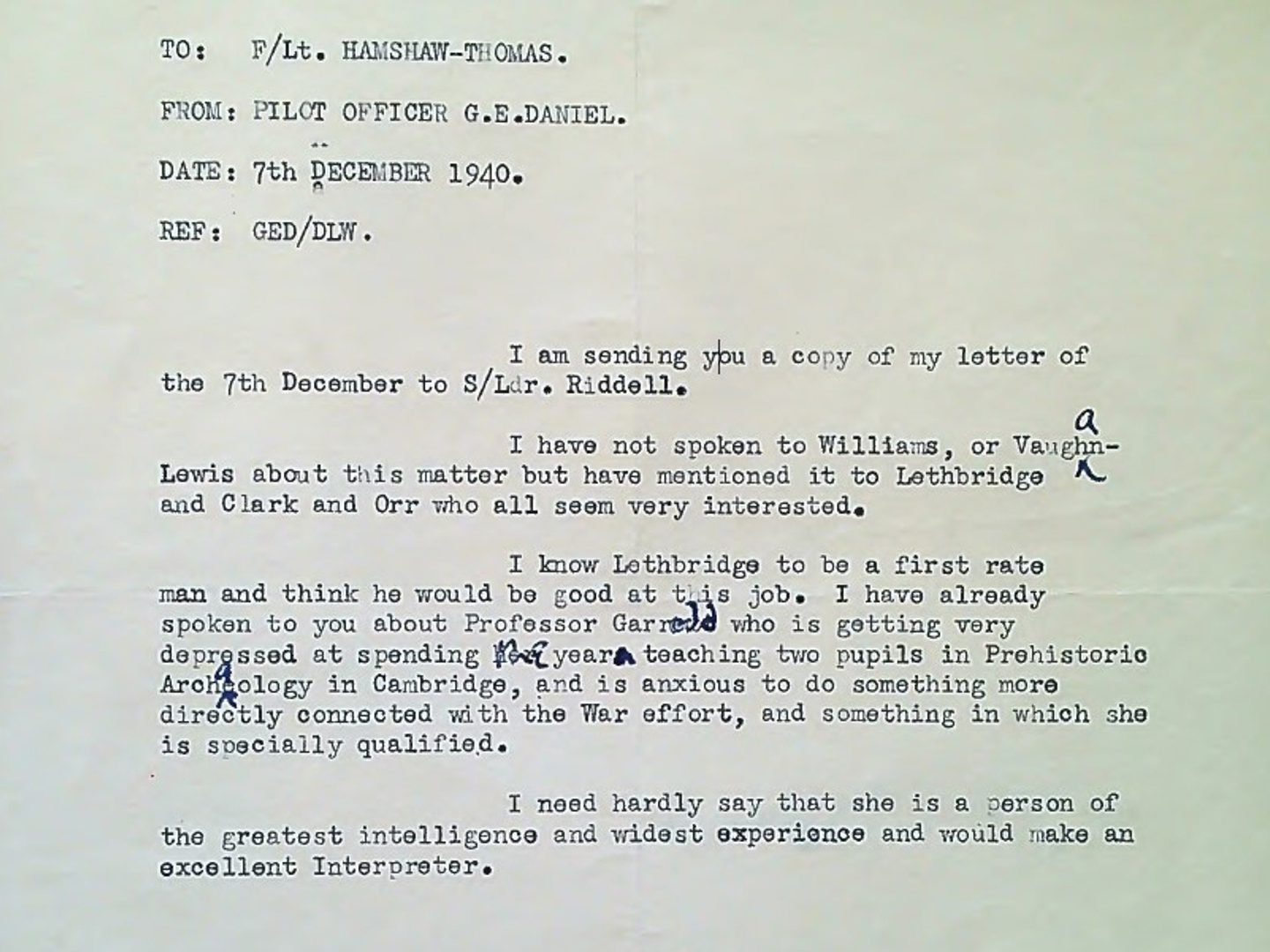
Text from a letter sent by Glen Daniel to Hugh Hamshaw Thomas in December 1940, recommending Dorothy Garrod as a suitable candidate for PI work. Image courtesy the Medmenham Collection
The correspondence makes clear how much recruitment relied on personal recommendations like these. In December 1940, the archaeologist Glyn Daniel (who also served at RAF Medmenham) was responsible for suggesting a number of names for the department that would become the ACIU. Perhaps most notable among them was the eminent archaeologist Dorothy Garrod. In a fascinating insight into wartime life, he notes Garrod:
‘is getting very depressed at spending the year teaching two pupils in Prehistoric Archaeology in Cambridge, and is anxious to do something more directly connected with the War effort, and something in which she is specially qualified. I need hardly say that she is a person of the greatest intelligence and widest experience and would make an excellent Interpreter.’
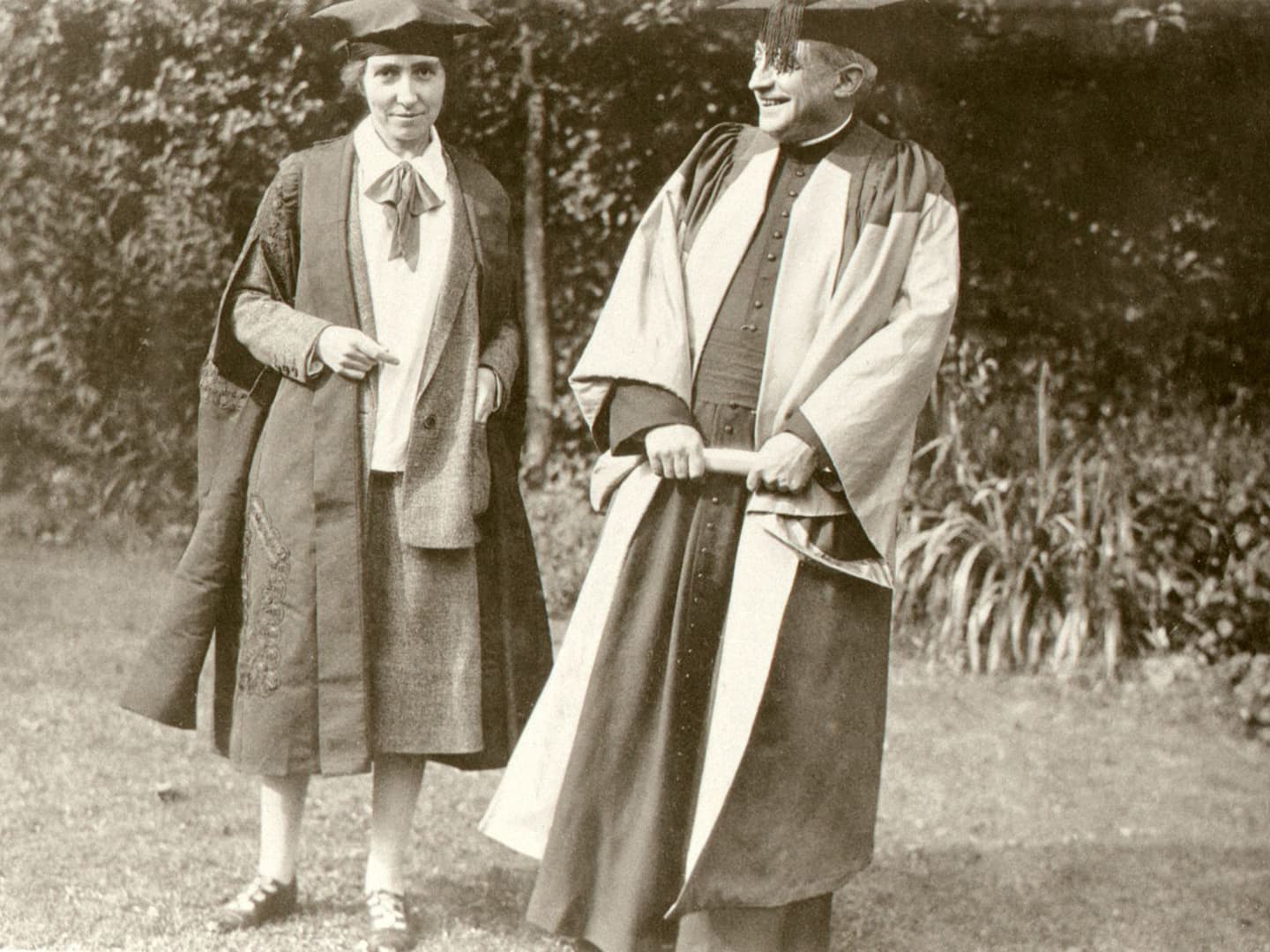
Dorothy Garrod before her time as a PI, with mentor and fellow eminent archaeologist Abbé Henri Breuil in 1938; Musée d'archéologie nationale - Domaine national de Saint-Germain-en-Laye
Garrod had worked with the Catholic Women’s League during the First World War, and would go on to be a successful and popular PI at RAF Medmenham. The archives of the Medmenham Collection provide a fascinating window into the networks and relationships that led to PIs like Garrod contributing vital war work as part of the Allied Central Interpretation Unit at RAF Medmenham.
Ben Reiss, NCAP Collections Manager
ACIU Collection Dorothy Garrod Aerial Photography and the Second World War

